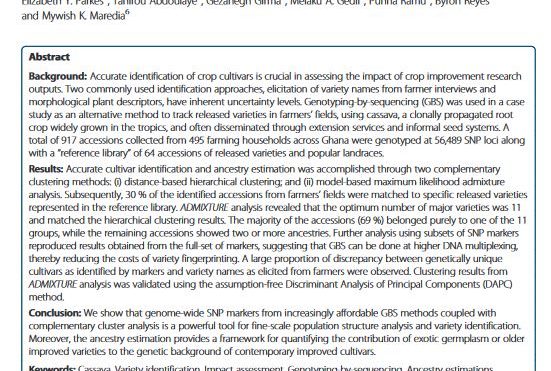Accurate identification of crop cultivars is crucial in assessing the impact of crop improvement research. Two commonly used identification approaches, elicitation of variety names from farmer interviews and morphological plant descriptors, have inherent uncertainty levels. Genotyping-by-sequencing (GBS) was used in a case study as an alternative method to track released varieties in farmers’ fields, using cassava, a clonally propagated root crop widely grown in the tropics, and often disseminated through extension services and informal seed systems.
We show that genome-wide single nucleotide polymorphism markers from increasingly affordable GBS methods coupled with complementary cluster analysis are a powerful tool for fine-scale population structure analysis and variety identification. Moreover, the ancestry estimation provides a framework for quantifying the contribution of exotic germplasm or older improved varieties to the genetic background of contemporary improved cultivars.
Region: Not specific
Date published:
2015
Published by:
BMC Genetics
Type of resource:
Journal article
Resource topic:
Cassava
Project/Programme: Not specific
Pest/Disease: Not specific
Pages:
11
File type:
External link (1,579 KB)




